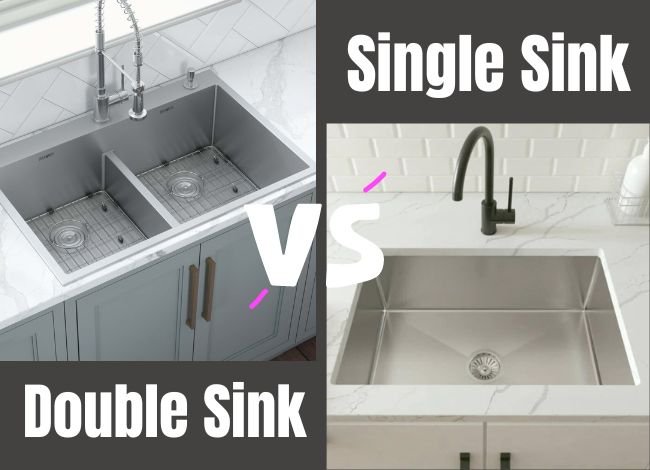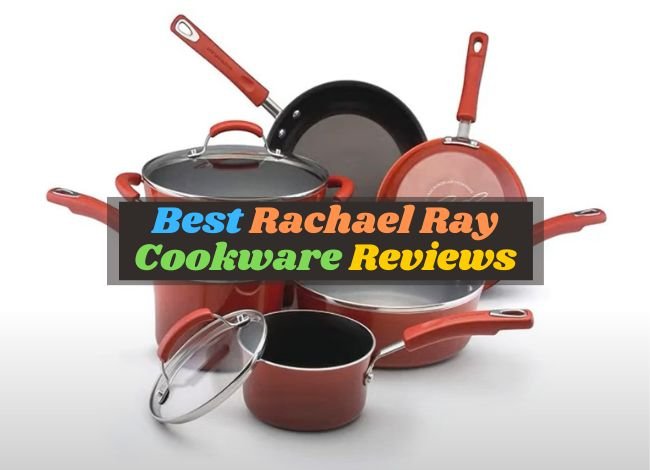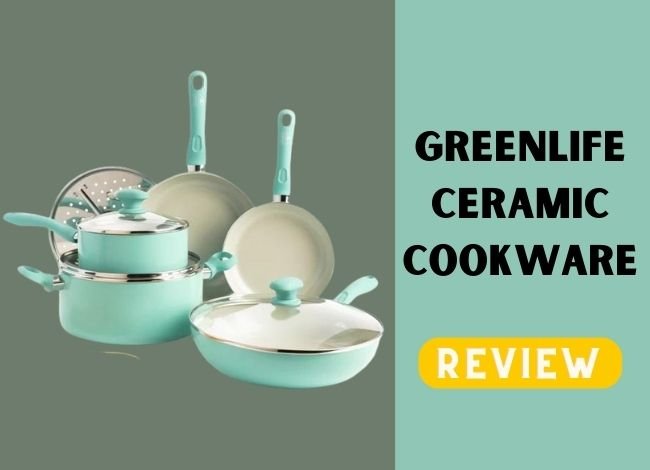Last Updated on January 22, 2024
When it comes to kitchen renovations or new home constructions, one of the essential decisions homeowners face is choosing between a double sink and a single sink. This choice not only affects the kitchen’s functionality but also its aesthetic appeal. A double sink, equipped with two basins, offers distinct advantages for multitasking and separating different types of kitchen tasks. It allows for simultaneous activities like washing dishes in one basin while rinsing vegetables in the other. On the other hand, a single sink, with its singular, often larger basin, provides ample space for large dishes and pots, making it ideal for kitchens with limited counter space. The decision between a double and single sink hinges on factors such as kitchen size, cooking habits, and personal preferences, each bringing its unique benefits to the heart of the home – the kitchen.
Single-Bowl Sink
A single-bowl sink, as the name suggests, features only one basin. This type of sink is characterized by its simplicity and uniformity, providing a singular, uninterrupted space for all sink-related activities. Ranging in size from compact to large, single-bowl sinks can fit in various kitchen layouts, from small apartments to spacious homes. The lack of a divider, which is present in multi-bowl sinks, allows for more room to maneuver larger items such as pots, pans, and baking sheets. This can be especially beneficial when handling big cookware or engaging in tasks requiring more space, like washing bulky items or preparing food. Additionally, single-bowl sinks often result in a cleaner, more streamlined look in the kitchen, contributing to a modern and minimalist aesthetic. They are available in a wide range of materials, including stainless steel, granite composite, cast iron, and more, allowing for versatility in design and functionality.
Pros of a Single-Bowl Sink:
- Spaciousness: Single-bowl sinks offer a large, unobstructed space, making it easier to wash large items like baking sheets, stockpots, and oven trays.
- Simplified Design: A single bowl’s simplicity creates a clean, streamlined look in the kitchen, contributing to modern, minimalist aesthetics.
- Cost-Effectiveness: Generally, single-bowl sinks are more affordable than double-bowl options. This cost-saving can be significant, especially for high-quality materials.
- Easy to Clean: Single-bowl sinks are easier to clean with no divider. There are fewer corners and crevices where grime can accumulate.
- Flexibility in Faucet Placement: The lack of a divider allows for more flexibility in faucet placement and additional fixtures like soap dispensers.
- More Under-Sink Storage: A single bowl typically requires less plumbing underneath, leaving more space for storage.
- Better Accommodation for Cooking and Cleaning Style: For those who prefer using large pans or do a lot of filling and emptying, the single bowl is more accommodating.
- Variety in Sizes and Styles: Single-bowl sinks come in a wide range of sizes and styles, making it easier to find one that fits your kitchen’s specific needs and design.
- Efficient Use of Space: A single-bowl sink in smaller kitchens can maximize counter space while providing ample room for kitchen tasks.
- Ideal for Small Households: A single-bowl sink often provides sufficient space for cooking and cleaning for individuals or small families.
Cons of a Single-Bowl Sink:
- Limited Space for Multi-Tasking: A single bowl does not allow multitasking like a double bowl. You can’t, for example, soak dishes on one side while rinsing vegetables on the other.
- Inconvenience During Large Meal Prep: When preparing large meals, space can feel limited. Washing and preparing ingredients simultaneously becomes a challenge.
- Difficulty in Waste Separation: Without a second bowl, it’s harder to separate items for disposal, recycling, or composting while still using the sink for other tasks.
- Potential for More Water Use: With only one space to work in, you might constantly use more water to clear the area for different tasks.
- Lack of a Drying Area: Unlike double sinks where one side can be used for drying washed items, single sinks lack this convenience unless an external drying rack is used.
- Not Ideal for Large Families: For households with many members, the single bowl can become a bottleneck during busy kitchen hours.
- Limited by Size: While they are available in various sizes, the physical dimensions of your kitchen might limit the size of a single-bowl sink.
- Compromise on Functionality for Style: Sometimes, choosing a single-bowl sink is more about style than functionality, which might not suit everyone’s kitchen habits.
- Overcrowding During Clean-Up: The sink can become overcrowded after a large meal, making it difficult to manage clean-up efficiently.
- Less Ergonomic for Some Tasks: Certain tasks, like hand-washing delicate items, might be less ergonomic in a single, deeper bowl compared to a double sink setup.
Comparison Table: Double Sink vs Single Sink
| Feature | Single Sink | Double Sink |
|---|---|---|
| Space Requirements | Less space is needed, ideal for smaller kitchens or bathrooms. | Requires more space, suitable for larger kitchens or bathrooms. |
| Flexibility | Limited to one task at a time. | Allows for multitasking (e.g., washing and rinsing simultaneously). |
| Cost | Generally less expensive. | Typically, it is more expensive due to size and complexity. |
| Installation Complexity | Simpler to install due to smaller size and fewer connections. | More complex installation, may require additional plumbing. |
| Aesthetic Appeal | Minimalist and modern look. | Offers a traditional or professional kitchen look. |
| Storage | Less under-sink storage space. | More under-sink storage space. |
| Water Usage | Potentially less water usage due to size. | Can lead to higher water usage. |
| Functionality | Ideal for single users or smaller tasks. | Better for large families or extensive cooking/cleaning tasks. |
Double-Bowl Sink
A double-bowl sink consists of two basins separated by a divider. This sink style is popular in many kitchens due to its functionality and versatility. Each bowl can be of the same size or vary, with one being larger than the other, catering to different needs and preferences. The primary advantage of a double-bowl sink is the ability to multitask: one side can be used for washing dishes, while the other can be used for rinsing or holding clean dishes. This separation can also be useful for waste disposal if one side has a garbage disposal unit. Double-bowl sinks are ideal for kitchens with ample counter space, as they typically require more room than single-bowl sinks. They come in various materials like stainless steel, porcelain, and composite, providing options to match different kitchen designs. Two bowls allow for more organized kitchen tasks and can be particularly beneficial in households with more frequent or heavy kitchen use.
Pros of a Double-Bowl Sink
- Versatility in Kitchen Tasks: Double-bowl sinks allow you to perform multiple tasks simultaneously, such as washing dishes in one bowl while rinsing vegetables in the other.
- Better Organization: They allow for better organization and separation of clean and dirty dishes, or food preparation and cleaning tasks.
- Efficient Use of Space: A double-bowl sink efficiently uses the area in kitchens with ample counter space, offering more sink space without requiring additional room.
- Dedicated Disposal Area: One bowl can be used for waste disposal if equipped with a garbage disposal unit, keeping the other bowl free for other uses.
- Suitable for Hand Washing Delicates: Ideal for handwashing delicate items, with one side used for washing and the other for rinsing.
- Soaking and Cleaning Flexibility: Allows for soaking pots and pans in one sink while the other is available for regular use.
- Accommodates Different Size Items: Different bowl sizes can accommodate various items, from large pots and pans to smaller kitchen tools.
- Style and Design Choices: Double-bowl sinks come in a range of styles and materials, fitting diverse kitchen aesthetics.
- Resale Value: This can add to the resale value of a home, as many buyers prefer the functionality of double sinks.
- Prevents Cross-Contamination: Helps prevent cross-contamination between foods, which is especially important when handling raw meats and vegetables.
Cons of a Double-Bowl Sink
- Requires More Space: Double-bowl sinks take up more counter space, which might not be ideal for smaller kitchens.
- Inconvenient for Large Items: Washing large items like baking sheets or oversized pots can be challenging as they may not fit comfortably in one bowl.
- Higher Cost: Double-bowl sinks are generally more expensive than single-bowl sinks, both in terms of purchase price and installation.
- Complex Plumbing: Installation may require more complex plumbing work, especially if the bowls have different depths or features.
- Limited Bowl Usage When Full: If one bowl is full of dishes or soaking items, it limits the use of the other bowl.
- Cleaning Challenges: The divider between the bowls can make it harder to clean around and beneath it.
- Less Under-Sink Storage: The double basin takes up more under-sink space, reducing storage options for cleaning supplies and trash bins.
- Can Encourage Clutter: Having two bowls might encourage leaving dirty dishes in the sink longer.
- Energy and Water Usage: If both basins are used frequently, they might lead to higher water and energy use.
- Aesthetic Limitations: Some modern or minimalist kitchen designs might not accommodate the traditional look of a double-bowl sink well.




